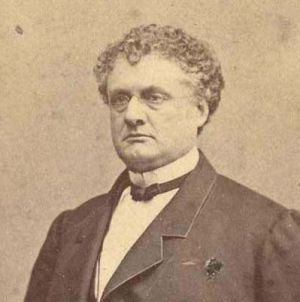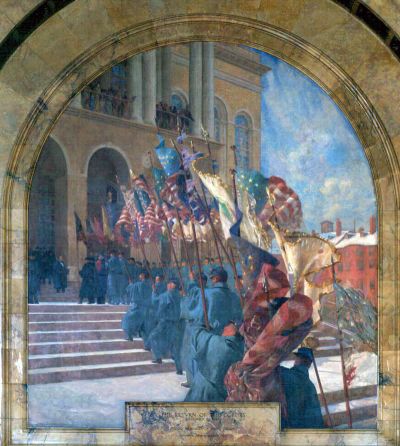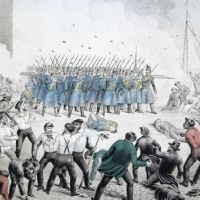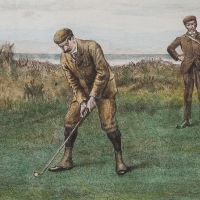Primary Source
Leopold Karpeles, a Jewish immigrant from Prague, enlisted with the 57th Massachusetts Infantry in March of 1864. Two months later, the 57th received its baptism of fire in the bloody and indecisive three-day battle of the Wilderness. In an 1870 affidavit, Karples related his actions as Regimental Color Bearer, for which he received the Congressional Medal of Honor:
Your Applicant . . . states that while, his Regiment was engaged in the Battle of the Wilderness on the 6th day of May, 1864, at 5 o'clock P.M., Col., Bartlett commanding said regiment having been wounded, Lieutenant Colonel Charles S. Chandler of said Regiment assumed command. When after 5 o'clock on the 6th day of May, 1864 the right of the 9th Corps commenced breaking and falling back in considerable disorder, the rebels having commenced a flanking movement . . . your applicant being Regimental Color Bearer . . . inquired of the Lieutenant Colonel what was the matter. When he the Lieutenant Colonel answered that he did not know what was the cause of the disorderly retreat of a portion of the Wing aforesaid. When your applicant urged him to stand firm and rally as many of the retreating troops as possible, he said, "All right, I will stand by you." We then, by every possible exertion, by waving the colors and otherwise, were enabled to rally a large number of retreating troops around our Regimental Colors. . . . When they were formed into a line and ordered to advance on the advancing Rebels, they, by a rapid discharge of fire arms, managed to check the enemy and enabled the disordered Wing to form, thereby, as your Applicant believes, saved that portion of the Wing aforesaid from almost total destruction, in which engagement our Colors were very severely shattered.
Online at the Jewish Virtual Library.









